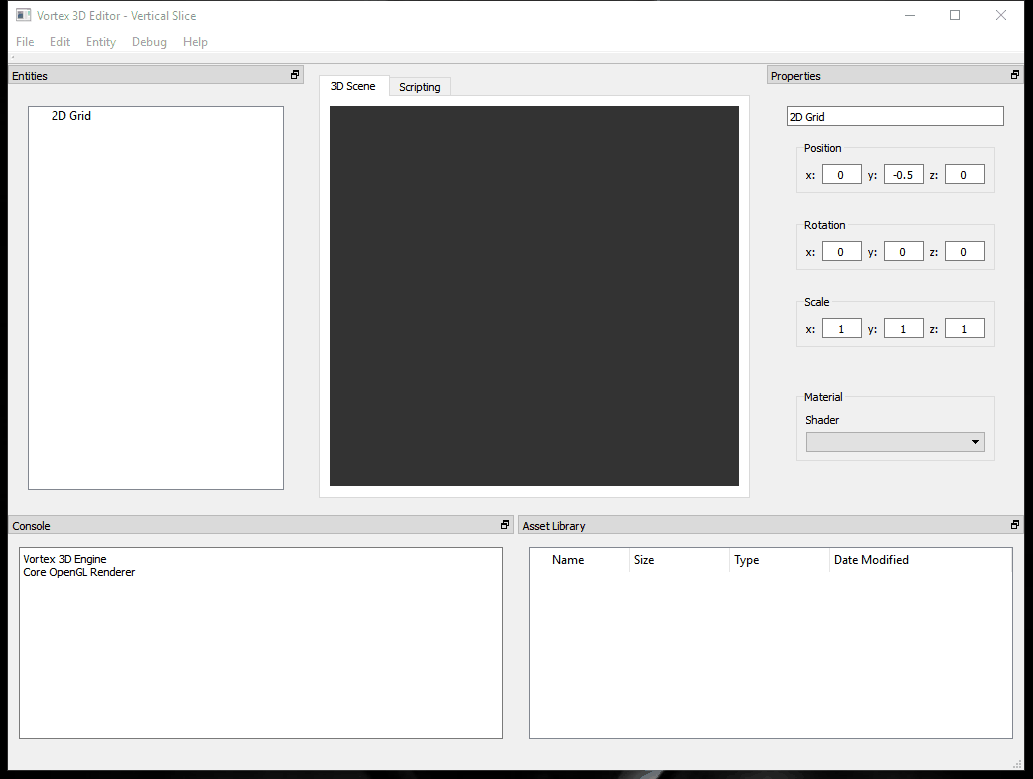Deferred Rendering – Part I
This week, work went into completing the initial implementation of a Deferred Renderer for Vortex. Every feature we had been incorporating into the Engine so far was building up to this moment and so, this time around, I finished writing all the components necessary to allow rendering geometry to the G-Buffer and then doing a simple light pass.

The image above shows the current functionality. Here, a box is created and its material is set to the “Geometry Pass” built-in shader. Other engines usually refer to this shader with another name, but ultimately, the purpose is always the same: populate the G-Buffer with data.
Once we’ve assigned the shader to the material, we attach a diffuse texture to it. This will be the object’s albedo value that we will write into the G-Buffer together with the corresponding position and normal data. Multi-Render Target support in Vortex is fundamental to efficiently fill the G-Buffer in only one render pass.
Next, we create a light entity. We mentioned the new light interface in Vortex from February. Light entities are gathered by the V3 renderer and, depending on their type, they are drawn directly on the framebuffer. The light shader is selected depending on the light type and it will access the readily available G-Buffer data to shade the scene.
The Postprocessing Underpinnings in the new renderer turned out to be essential for testing new ideas and debugging the implementation process every step of the way.
I’m quite happy with the results. Now that we have a complete vertical slice of the deferred renderer, we can iteratively add new features on top of it to expand its capabilities. From the top of my head, adding support for more light types and transparent meshes are two major features that I want to tackle in the upcoming weeks.